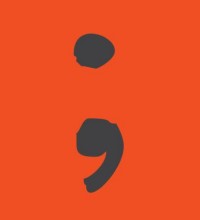Semicolons are my favourite kind of punctuation. Is that terribly nerdy? I like them because they add elegance, variety and clarity to a sentence. Semicolons have two basic uses.
To join related independent clauses in a sentence
If the different ideas in the sentence relate to each other, and they could be sentences all by themselves, then put a semicolon in the middle. Both clauses have equal weight in the sentence.
I went for a walk along the beach; it took a lot longer than expected.
You would also use a semicolon if your sentence contained a conjunctive adverb (e.g. however, therefore, nonetheless, accordingly) or a transitional phrase (e.g. in the first place, not to mention, as a result).
I went for a walk along the beach; however, it took a lot longer than expected.
I went for a walk along the beach; as a result, I was late back to work.
You would not use a semicolon if you had a coordinating conjunction (and, but, for, nor, or, so, yet) between the two clauses. In that case, a comma would be required.
I went for a walk along the beach, but it took a lot longer than expected.
You would also not use a semicolon if you had two unrelated clauses.
I went for a walk along the beach; my lunch was really tasty. This incorrect example should be made into separate sentences.
You should never use a comma to separate independent clauses.
I went for a walk along the beach, it took a lot longer than expected. This error is known as a comma splice, and is corrected using a semicolon in place of the comma.
To separate the elements in complicated lists
If you are listing sets of items within a sentence, and those sets of items contain commas, you can use a semicolon to separate the sets.
We need a lot of things for the new kitchen: cups, mugs and glasses; plates, saucers and bowls; and knives, forks and spoons.
Do you have any questions about semicolons? If so, ask me over on my Facebook page.
If you’d like to know how to use a colon (:), I’ll be covering that in one of my upcoming blogs.

